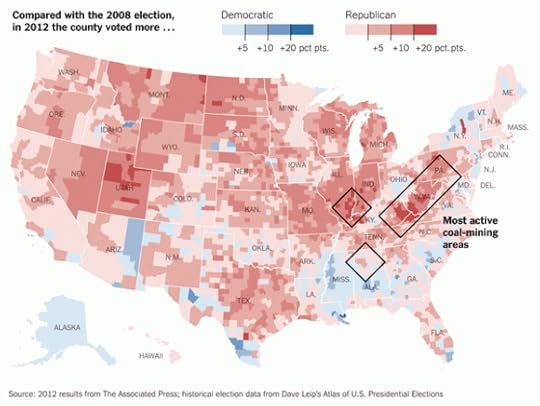How Risky Is Going After Big Coal?
For Democrats, not very:
The war on coal hasn’t hurt the Democrats very much in presidential elections. Since 2000, when coal country and Appalachia helped cost Mr. Gore the presidency, Democrats have built an alternative path to victory with large margins in diverse, well-educated metropolitan areas, like Northern Virginia, Denver and Columbus, Ohio. Additional losses in coal country haven’t changed this because the areas don’t have enough voters to make a difference in battleground states.
And coal country has clear boundaries that limit harm to Democrats. In 2012, Mr. Obama suffered significant losses in the coal country of southwestern Virginia, losing as much as a net 30 points in traditionally Democratic Dickenson and Buchanan counties. Yet just a few miles to the east, in counties where there are no coal mines, Mr. Obama retained nearly all of his support. The same was true in southeastern Ohio.
Alec MacGillis adds:
Take Kentucky, the focus of much of the punditry, given the close race between Republican Senate leader Mitch McConnell and Democratic challenger Alison Lundergan Grimes. Coal-mining employment in the Bluegrass State has plunged by more than half in the past three decades, from 38,000 in 1983 to under 17,000 in 2012, according to the U.S. Department of Labor. (Nationally, there are 78,000 people employed in coal mining—well less than half as many as are employed in oil and gas extraction, and not much more than the number of people employed in logging.) To put that in perspective: the auto manufacturing industry in Kentucky employs three times as many people as the coal industry does today. When is the last time you heard pundits making grand predictions about how new auto-industry regulations would affect Kentucky “Car Country”?



Andrew Sullivan's Blog
- Andrew Sullivan's profile
- 153 followers




